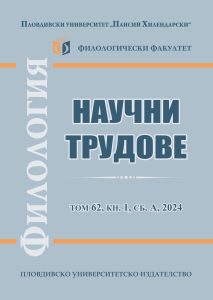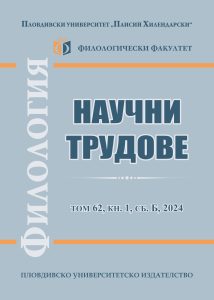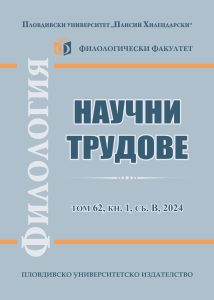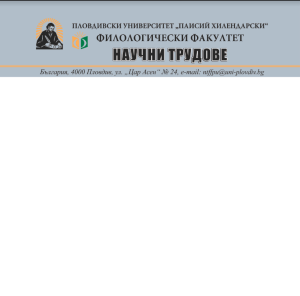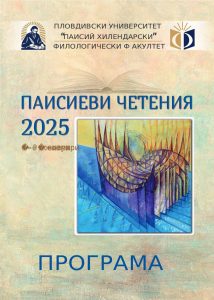VOL. 55, BOOK 1, PART C, 2017, pp. 208 – 214 Full text (Bg)
Author: Tanya Bedavadzhieva
Affiliation: Paisii Hilendarski University of Plovdiv
Abstract
The longing for totality and harmony has been experienced in many ages. Variously articulated as a desire for oneness with God, as a compulsion for unity with nature or union of sexual opposites and which has been alternately termed the hermaphroditic or the androgynous ideal. The androgyny is a combination of masculine and feminine. In primitive times it was expression of the divine and it has served as a model for human perfection. Most creation myths tell of a world which came into existence following the break-up of a primordial unity into two opposing principles. They are few popular myths telling the story of the androgyny. First important documentation in Western philosophy is found in Plato’s Symposium. Plato`s myth identifies the androgyny with an ideal state of being or state of wholeness. Few centuries later Ovid’s myth telling the story of Hermaphroditus and Salmacis. Unlike Plato` he is not telling the story of ideal love but of a power struggle between sexes. The main purpose of the text is to show how the early germen poet Novalis uses Ovid`s myth in his novel Heinrich von Ofterdingen. Novalis, In many cases following Ovid’s story, but only until the moment of transformation. After that Heinrich`s story is more close to Plato`s myths of origin of love, where union of opposites is an expression of wholeness and perfection.
Key words: Plato, Ovid, Novalis, Symposium, Hermaphroditus, androgyny, Heinrich von Ofterdingen, wholeness, unity


